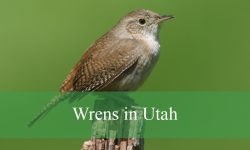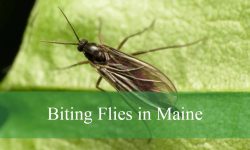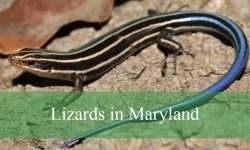Spiders in Missouri represent a diverse and intriguing group of arachnids that play vital roles in the state’s ecosystems. From small, elusive sheet weavers to larger wolf spiders that roam forest floors, the variety of species found throughout Missouri is truly remarkable. Learning about these spiders can help people appreciate their ecological importance and recognize which ones pose no threat.
Missouri’s varied landscapes, including wetlands, prairies, forests, and urban environments, provide perfect habitats for many different spider species. Exploring these areas offers a great opportunity to observe the fascinating world of spiders in Missouri up close. This guide highlights 35 common types of spiders, accompanied by pictures and useful identification tips.
Many spiders in Missouri may seem intimidating at first glance, but the majority are harmless and contribute to natural pest control. Understanding their behavior and characteristics allows for safe coexistence with these beneficial creatures. This article will help you identify and learn about the many spiders that call Missouri home.
Different Types of Spiders in Missouri
Tan Jumping Spider

The Tan Jumping Spider (Platycryptus undatus) is a small, agile spider recognized for its excellent jumping ability and subtle coloring. Females measure between 10 and 13 mm, while males are slightly smaller. Their flattened bodies are covered in fine hairs, and their coloration helps them blend into tree bark or wooden structures.
In Missouri, this spider prefers vertical surfaces such as walls, tree trunks, and wooden fences. Rather than building webs to catch prey, it actively stalks and pounces on insects, leaping up to five times its body length. Once it lands, it quickly immobilizes its prey with a silk dragline. When not hunting, the Tan Jumping Spider shelters in silk-lined retreats made from curled leaves or bark, and is believed to overwinter in communal hibernation clusters.
Despite its fearsome hunting skills, this species is known for its calm temperament. It often tolerates gentle human interaction and may even approach out of curiosity, thanks to its exceptional eyesight. Like others in the jumping spider family, it has a distinctive set of large front eyes, giving it a “cute” appearance. Its bite is rare and harmless, making it one of the more approachable spider species found in Missouri.
Bold Jumping Spider
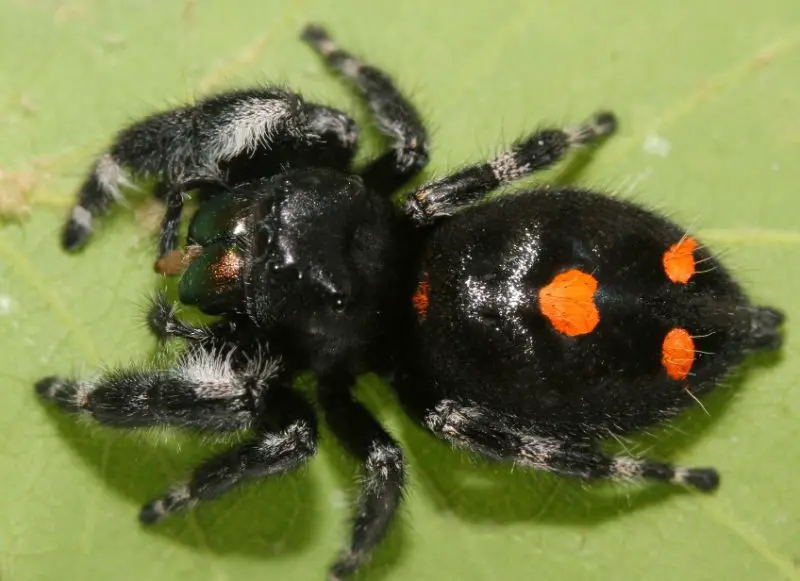
The Bold Jumping Spider (Phidippus audax), also known as the Daring Jumping Spider, is one of the most recognizable spiders in Missouri due to its black body, white spots, and iridescent green or blue mouthparts. Females grow up to 11 mm in length, while males are slightly smaller at around 8 mm. Their compact bodies and thick legs make them powerful jumpers, capable of covering significant distances in pursuit of prey.
These spiders favor open environments such as fields, gardens, and even indoor spaces near windows. Rather than spinning webs for trapping insects, Bold Jumping Spiders use silk for safety lines while leaping and for building protective shelters. With their keen eyesight, they stalk prey like flies, moths, and other small insects. During courtship, they use visual cues and body movements to communicate with potential mates.
Although their appearance might be intimidating, they rarely bite unless provoked. Even then, the bite may cause only minor itching or swelling in humans. Bold Jumping Spiders are fascinating for their intelligence and ability to recognize objects and movement—traits that make them popular among spider enthusiasts. They are often spotted during the day as they explore surfaces in search of food.
Brown Recluse
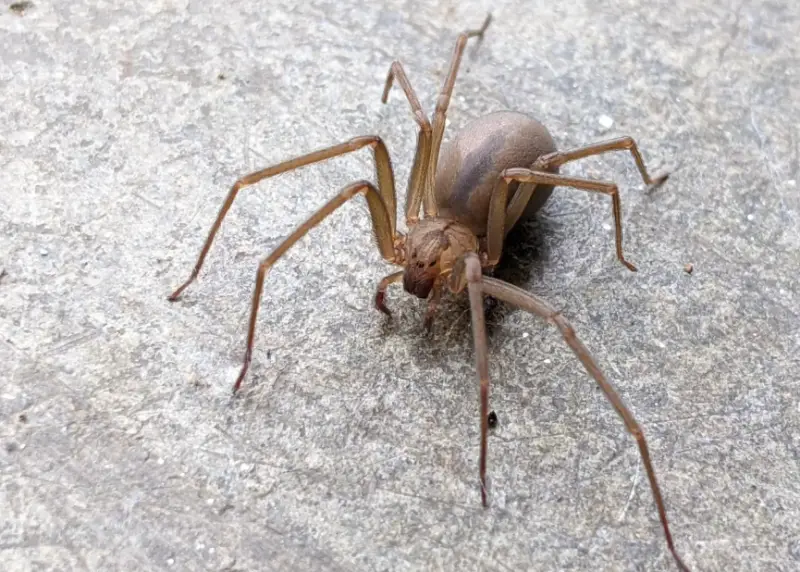
The Brown Recluse (Loxosceles reclusa), also referred to as the fiddleback or violin spider, is one of the most misunderstood yet medically significant spiders in Missouri. It typically ranges from 6 to 20 mm in size and has a uniform brown color with no spines on its legs. Some specimens may show a faint violin-shaped marking on the cephalothorax, though this feature isn’t always present or definitive.
Unlike other spiders, the Brown Recluse has only six eyes arranged in pairs, which makes it easier to distinguish from more common species. These spiders are secretive and often found in dark, undisturbed areas like closets, basements, and woodpiles. They build irregular webs primarily as retreats, not as traps, and hunt at night. When threatened, they usually attempt to escape but may also spin in circles or play dead.
Bites from a Brown Recluse are rare but can be serious due to their necrotic venom. If bitten, immediate medical attention is advised to prevent complications. These spiders feed on soft-bodied insects and other arthropods. A surprising fact about them is that despite their reputation, Brown Recluses are not aggressive and generally avoid human contact whenever possible, living quietly alongside people without incident.
Orchard Orbweaver
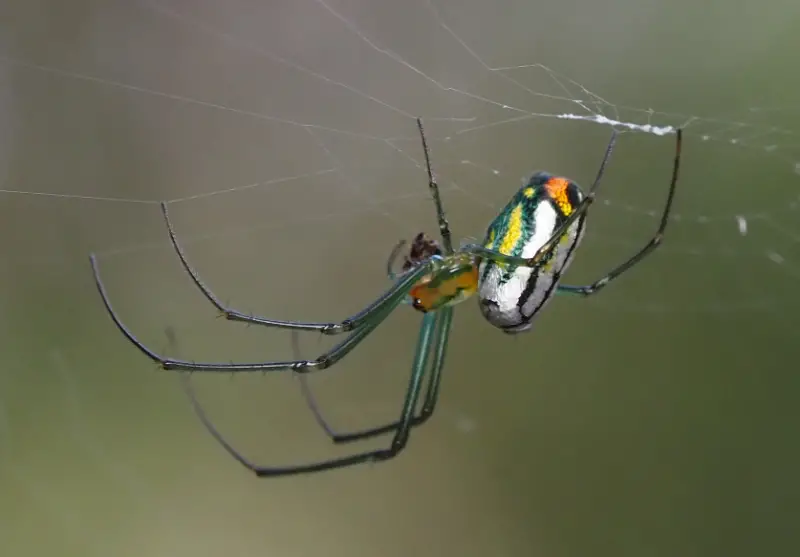
The Orchard Orbweaver (Leucauge venusta) is a small but striking spider known for its delicate appearance and vivid coloring. Adult females range from ⅛ to ¼ inch in length, and males are typically smaller. Their bright green and silver bodies make them easily distinguishable among foliage, especially when hanging upside-down in the center of their intricate webs.
These spiders build horizontal orb-shaped webs that can span up to 60 cm across, with up to 30 radial lines and 60 spiral turns. Juveniles often spin webs closer to the ground to trap low-flying insects, while adults position theirs about 1.5 meters high. The web’s center acts as the spider’s lookout, where the female waits head-down for prey to get caught.
Orchard Orbweavers are known for their shy and gentle nature. When disturbed, they usually drop from their webs and scurry away rather than showing aggression. If they do bite, which is rare, their venom poses no risk to humans. These spiders are commonly seen in gardens, forest edges, and orchards throughout Missouri during warmer months.
Arrowhead Orbweaver
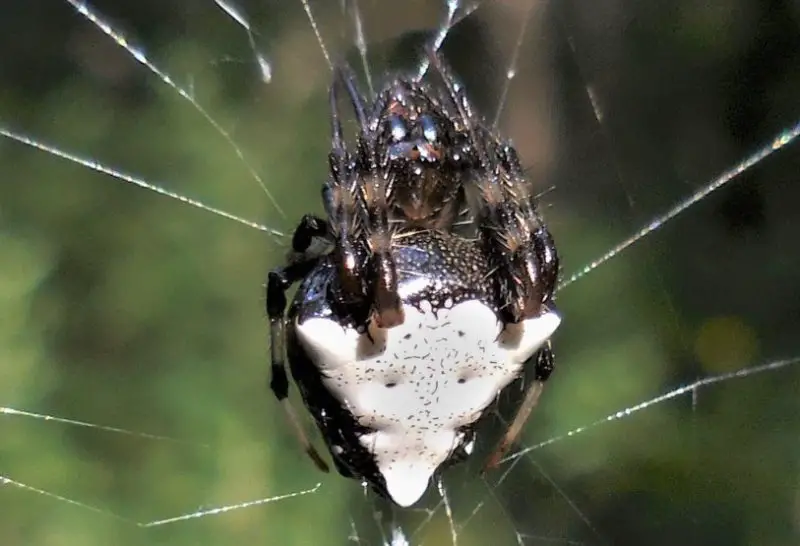
The Arrowhead Orbweaver (Verrucosa arenata) is one of Missouri’s more unique-looking spiders, thanks to the triangular or arrow-shaped abdomen of the females. Measuring between 7 and 14 mm, the females display a striking pattern on their back that may serve to deter predators. Males are smaller and less vivid but still share the general body shape.
These spiders create loose orb webs between trees and shrubs, typically in sunny and humid areas like woodland edges or urban gardens. One unusual trait is that they rest with their head pointing upward, unlike most orb-weavers that hang downward. Their webs are temporary, often spun anew in the early morning or evening and removed during the day.
Arrowhead Orbweavers are mild-mannered and non-aggressive toward humans. They prefer to stay hidden in foliage unless it’s time to build a web. Although they do bite when provoked, their venom is harmless to people. These spiders are most commonly seen in late summer and early fall across Missouri.
Spined Micrathena
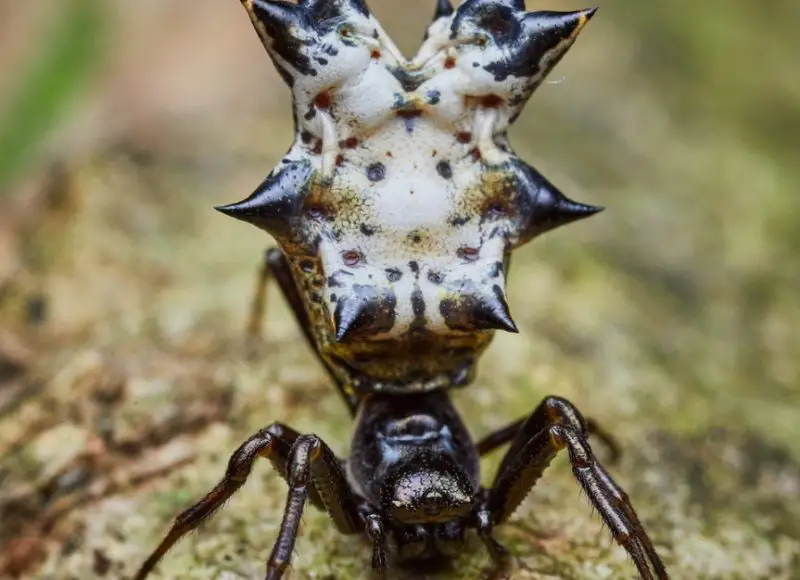
The Spined Micrathena (Micrathena gracilis) is instantly recognizable due to its unusual appearance. It has a bulky abdomen covered in sharp-looking spines and is usually marked in bold black and white. Adults range in size from 2 to 10.8 mm, with females being notably larger and more ornate.
Unlike many spiders that remain in one place, Spined Micrathenas relocate frequently, building a new web every 6–7 days. Their orb-shaped webs can be up to 20 cm wide and are typically found in wooded areas, especially around oaks and hickories near water. At night, they reconstruct the inner part of the web to maintain its strength and stickiness.
These spiders are active during daylight hours in late summer and early fall. Despite their intimidating appearance, they are non-aggressive and pose no danger to humans. Their venom is only effective against small insects and is completely harmless to people. Many nature enthusiasts enjoy spotting them during forest hikes in Missouri.
Dark Fishing Spider
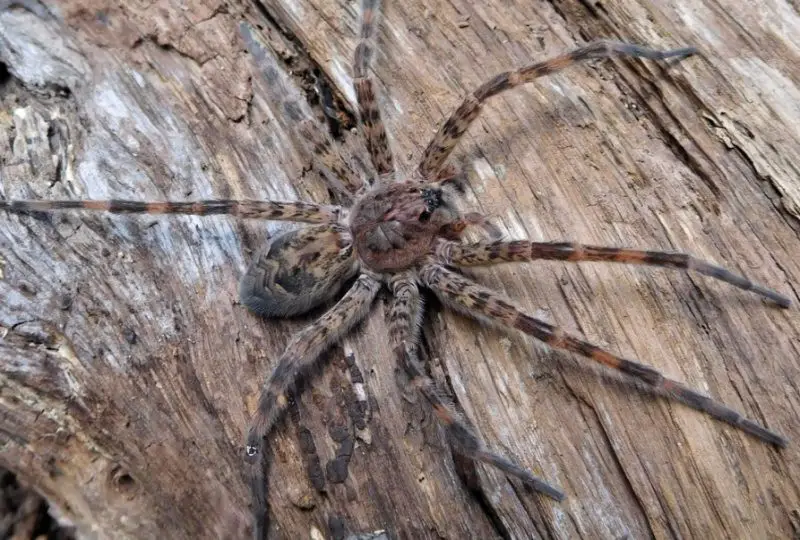
The Dark Fishing Spider (Dolomedes tenebrosus) is one of the largest spiders found in Missouri. Females can grow up to an inch in body length, and when including their legs, they may span more than 3 inches. Males are significantly smaller and less commonly seen. Their brown and gray coloring helps them blend into tree bark and rocky crevices.
These spiders are expert hunters, preferring to chase prey rather than wait for it in webs. At night, they emerge from hiding places to stalk insects and even small fish. They can run across water surfaces and dive beneath them if threatened. This ability makes them well-suited for habitats near streams, ponds, or wetlands.
Dark Fishing Spiders can appear intimidating due to their size and speed. Female spiders may react aggressively when cornered, striking instead of fleeing. However, they are not considered dangerous to humans. Although their bite can pierce skin, it typically results in pain no worse than a bee sting. Most encounters are harmless and brief.
Yellow Garden Spider
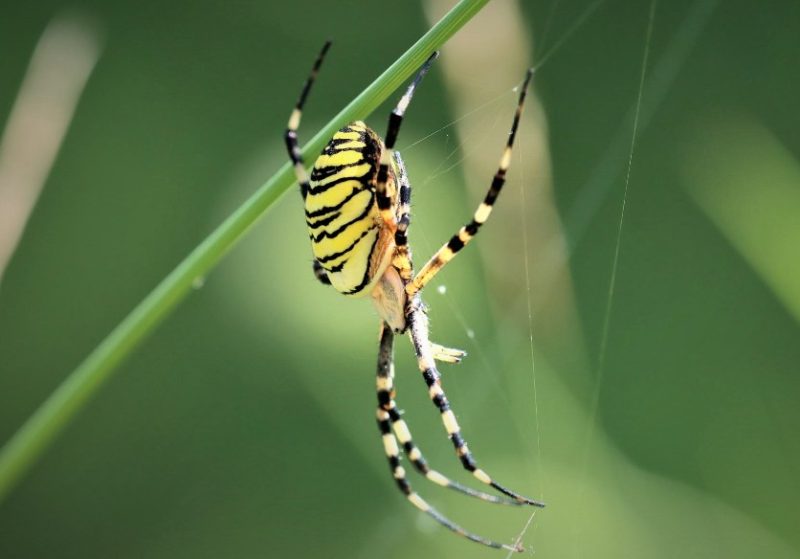
The Yellow Garden Spider (Argiope aurantia) is a striking orb-weaving species known for its vibrant black and yellow coloration. Females are notably larger than males, reaching lengths of 19 to 28 millimeters, while males are significantly smaller. These spiders have a unique foot structure with three claws per foot instead of the typical two, which helps them expertly weave large, intricate webs.
In Missouri, you’ll often find Yellow Garden Spiders in sunny, open spaces such as gardens, meadows, and the edges of farmlands. They attach their impressive webs—sometimes up to two meters wide—to surrounding plants. A key identifying feature is the bold, zigzag pattern in the center of the web, known as the stabilimentum. Although its exact function is debated, some scientists believe it may help prevent birds from flying through the web.
Yellow Garden Spiders are non-aggressive and will typically retreat if approached. If disturbed, they may bite, but their venom is harmless to humans unless an allergy is present. These spiders feed on flying insects like flies, grasshoppers, and mosquitoes. Interestingly, they often consume their webs at night and rebuild them by morning, a behavior that conserves resources and keeps the web effective.
Spotted Orbweaver
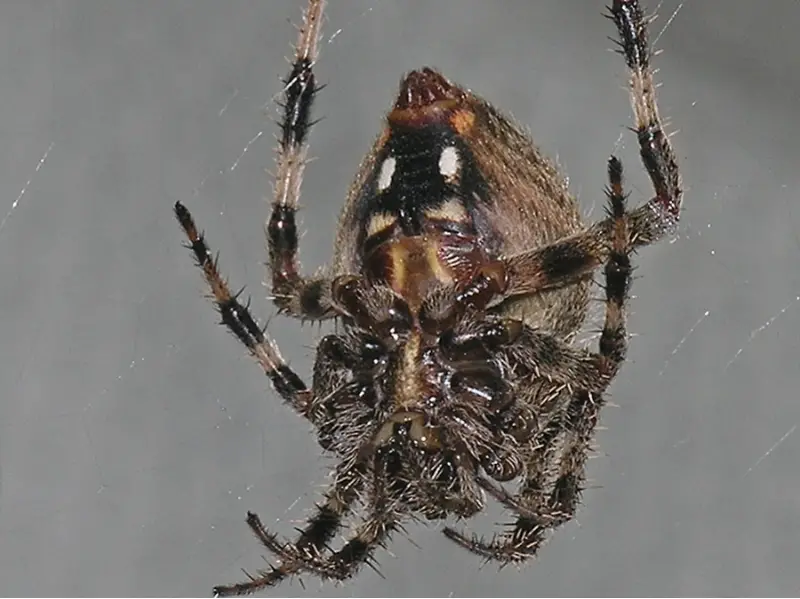
The Spotted Orbweaver (Neoscona crucifera), also called Hentz’s Orbweaver or barn spider, is a hairy spider with noticeable color variations. Females range from 8.5 to 19.7 mm in size and display reddish-brown to dark brown tones with red legs, while males are lighter and smaller, sometimes with nearly black sides. These physical traits make them relatively easy to identify, especially when seen up close.
Common across Missouri, Spotted Orbweavers favor wooded areas, tall grass, and man-made structures like barns and fences. They construct large circular webs that can span up to two feet across, often suspended high on buildings. Although they are primarily nocturnal, females may venture from their webs during the day in late summer and fall. During daylight, they often hide in curled leaves or under eaves, awaiting nighttime activity.
These spiders are beneficial for insect control, feeding on moths, beetles, and other nocturnal insects. Despite their large appearance, their bites are not dangerous to humans. A fun fact about this species is that while they actively hunt for prey, their egg sacs are commonly targeted by predatory wasps, making reproduction a risky endeavor for the next generation.
American Nursery Web Spider
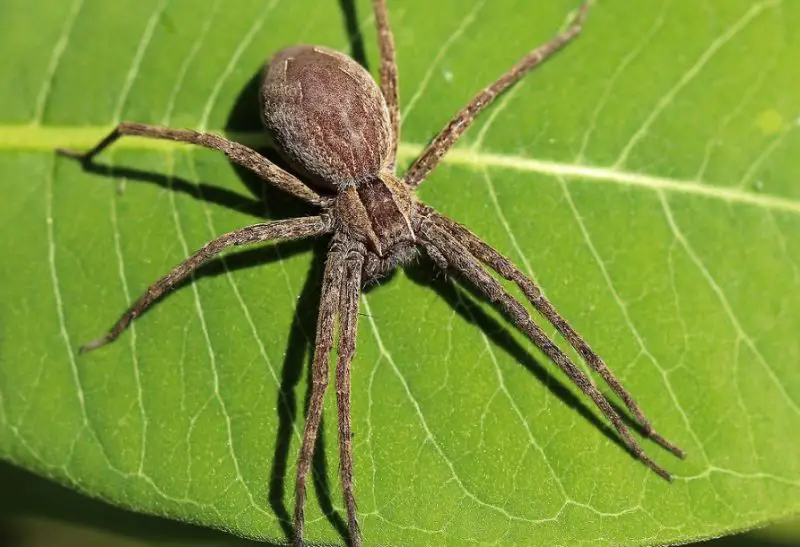
The American Nursery Web Spider (Pisaurina mira) is a tall, slender spider commonly found among tall grasses and low shrubs throughout Missouri. Females typically measure between 12 and 15 mm, while males range from 9 to 15 mm. They are light brown with subtle patterns that provide camouflage in grassy areas.
Rather than using webs to trap food, this species relies on patience and speed. It ambushes prey such as gnats and mosquitoes by grabbing them with its strong jaws and injecting a fast-acting venom. This venom liquefies the prey’s internal organs, turning it into a protein-rich fluid that the spider consumes. Despite its gruesome feeding method, it plays a beneficial role by controlling insect populations.
When frightened, these spiders prefer to flee. If near water, they will sometimes escape by running across the surface or even diving underwater. The name “Nursery Web” comes from the female’s behavior of guarding her egg sac inside a silk tent, often built on vegetation. Though deadly to insects, their venom is not harmful to humans. In fact, they’re valued allies in Missouri agriculture.
Rabid Wolf Spider
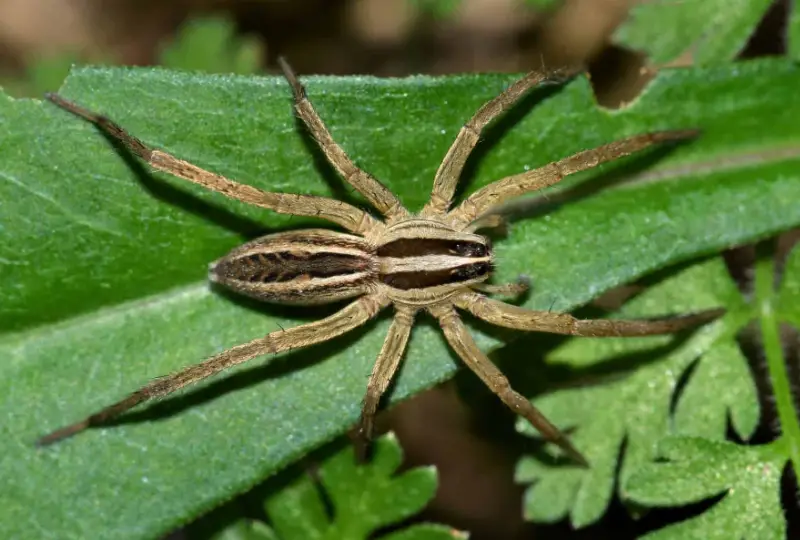
The Rabid Wolf Spider (Rabidosa rabida) is commonly found throughout Missouri in cotton fields, woodland areas, and near ponds. Females can reach up to 25 mm in body length, while males are significantly smaller. Their light brown bodies are marked with dark stripes and supported by long legs and a distinctive eye arrangement, making them well-adapted for nocturnal hunting.
Unlike web-building spiders, Rabid Wolf Spiders rely on speed and stealth to hunt. They stalk or chase down their insect prey and use silk only to immobilize or wrap captured victims. These spiders are masters of camouflage, often blending into fallen leaves or tree bark to remain undetected by predators or prey.
Despite their intimidating name, Rabid Wolf Spiders pose no real danger to people. They are not aggressive and will only bite in self-defense when handled. Their bite may cause mild irritation at most. In Missouri, they play a valuable ecological role by helping to control insect populations in both natural and agricultural environments.
Golden Jumping Spider
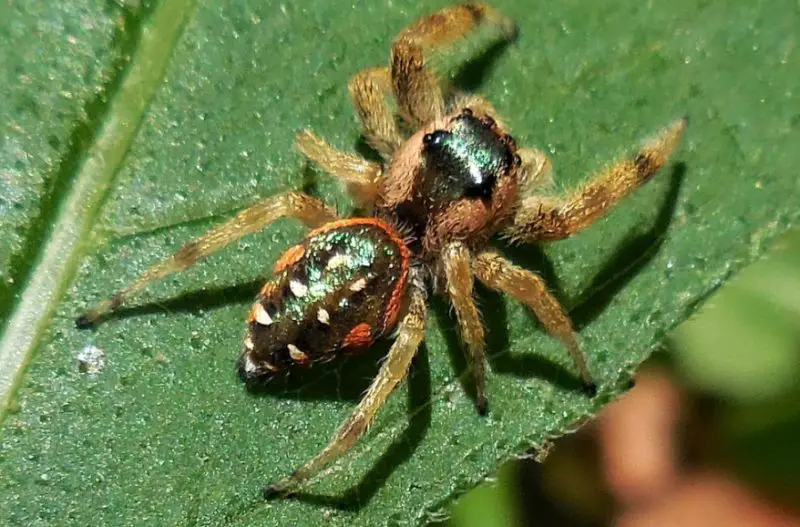
The Golden Jumping Spider (Paraphidippus aurantius), also referred to as the Emerald Jumping Spider, is a vivid and eye-catching species frequently seen in Missouri’s woodlands, meadows, and gardens. Both males and females feature a striking metallic green or golden stripe on the abdomen, which reflects light and provides camouflage among plants.
These spiders are exceptional hunters, using their strong legs to leap distances many times their body length. Rather than using webs to trap prey, they rely on their excellent vision and quick reflexes to ambush or chase down insects. They often exhibit curiosity toward humans and will turn to face movement with their large forward-facing eyes.
Golden Jumping Spiders are harmless and rarely bite unless provoked. Their venom is not medically significant. In Missouri, these spiders are beneficial residents of yards and fields, serving as natural pest controllers that help reduce populations of flies, mosquitoes, and other small insects.
Common House Spider
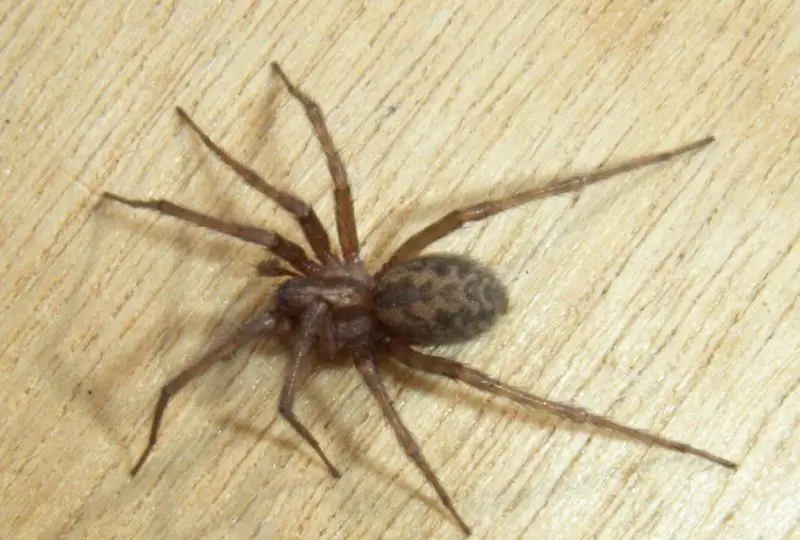
The Common House Spider (Parasteatoda tepidariorum), also known as the American House Spider, is one of the most widespread spiders across Missouri. These spiders favor indoor spaces such as attics, basements, sheds, and barns. Females are typically 5 to 6 mm in body length, while males are slightly smaller. Their rounded abdomens and drab coloring often lead to confusion with widow spiders.
They spin messy, irregular webs in quiet corners and feed on a wide range of household pests including flies, ants, mosquitoes, and even cockroaches. If a prey item tries to escape, the spider may shoot webbing from a distance and pull it back in with precision. Their ability to manage indoor pests makes them a welcome presence in many homes.
Though they live close to humans, Common House Spiders are not dangerous. They are timid and often play dead when threatened. Bites are extremely rare and medically harmless. In Missouri, their presence is more helpful than harmful, offering a natural defense against unwanted insects.
American Green Crab Spider
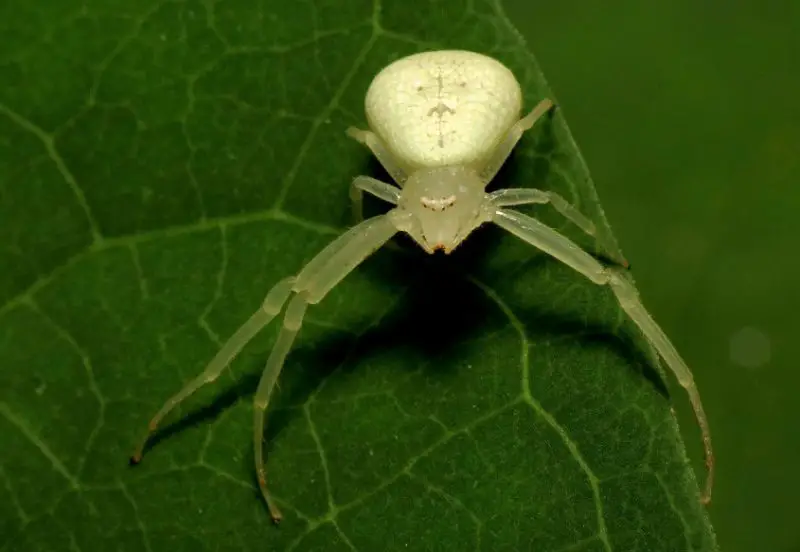
The American Green Crab Spider (Misumessus oblongus) is a small, bright green species found in grassy fields, wildflower patches, and open woodlands throughout Missouri. Females are around 3 mm in body length, with males being even smaller. Their compact, flat bodies and extended front legs give them a crab-like appearance, allowing them to ambush prey on leaves and flowers.
These spiders do not use webs to capture food. Instead, they hide on vegetation and strike when small insects come within range. They do use silk for egg sacs, which the female guards until her death. Their emerald coloration helps them remain hidden from both predators and prey in their natural habitat.
Although small in size, they are efficient hunters and contribute to controlling insect populations. Their bite is harmless to humans. In Missouri’s prairies and gardens, the American Green Crab Spider is a beneficial and unobtrusive resident that adds to the region’s ecological balance.
Dimorphic Jumping Spider
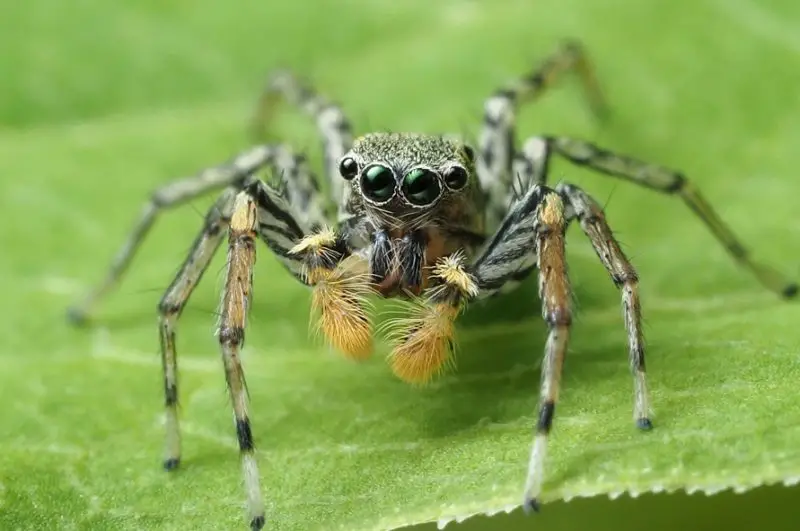
The Dimorphic Jumping Spider (Maevia inclemens) is a unique species found throughout Missouri in open fields, forest edges, and gardens. Females measure between 6.5 and 8 mm in length, while males come in two distinct forms—one with a black body and three tufts on its head, and another with a striped gray-and-black body. This dimorphism is rare among spiders and fascinating to observe.
These spiders have exceptional vision, especially through their large forward-facing eyes, which provide depth perception and aid in hunting. The smaller lateral eyes detect motion, allowing the spider to avoid danger and detect mates or prey. Dimorphic Jumping Spiders do not build webs to catch food but use their strong legs to leap directly onto unsuspecting insects.
Though curious and often engaging with human observers by watching movement, these spiders are not dangerous. Their bite is rare and causes no significant harm. In Missouri, they play an important role in garden and field ecosystems by preying on small insect pests and contributing to biodiversity.
Eastern Parson Spider
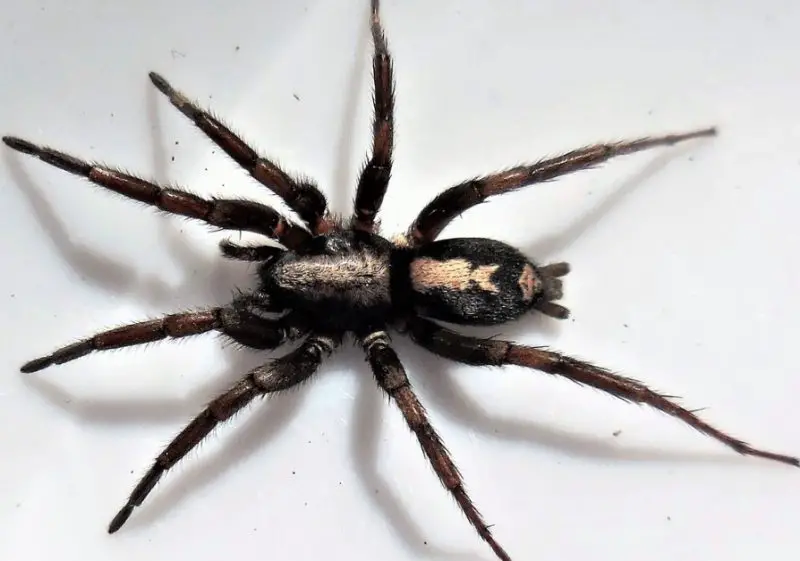
The Eastern Parson Spider (Herpyllus ecclesiasticus) is a fast-moving ground spider commonly encountered across Missouri, particularly in deciduous forests and residential areas. Named for the distinctive white marking on its abdomen—resembling a cravat worn by 18th-century clergy—it typically has a velvety black body with brown legs and measures between 10 and 15 mm in length.
These spiders are nocturnal hunters that do not rely on webs to catch prey. Instead, they emerge at night from silken retreats hidden under rocks, logs, or baseboards to stalk insects directly. Their agility and cryptic coloration allow them to move undetected, making them efficient predators in both natural and indoor environments.
Although not considered dangerous, Eastern Parson Spiders can bite if provoked, leading to mild pain or local irritation. Some individuals in Missouri have reported allergic reactions, but serious symptoms are rare. Despite their secretive behavior, they play a quiet role in managing pest populations in the region’s woodlands and homes.
Furrow Orbweaver
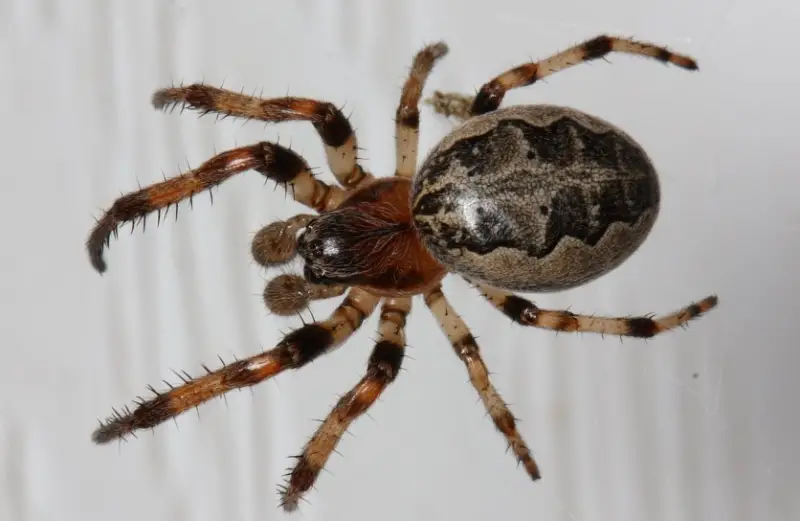
The Furrow Orbweaver (Larinioides cornutus) is frequently spotted in Missouri’s wetland margins, forested areas, and even man-made structures such as barns and bridges. This species is known for its intricate orb webs, which are typically built near moist vegetation or close to bodies of water. Females measure up to 14 mm, while males are smaller and lighter in color.
Furrow Orbweavers are notable for recycling their webs daily. Each evening, they consume the silk from their old web and repurpose it to spin a fresh one by morning. This process ensures their traps remain sticky and effective for capturing prey like damselflies, mosquitoes, and gnats—common insects found in Missouri’s humid habitats.
Though they are shy and rarely seen during the day, these spiders play an important role in controlling insect populations near rivers, lakes, and damp woodlands. Their bite is harmless to humans, and their presence signals a healthy balance in Missouri’s ecosystems.
Marbled Orbweaver
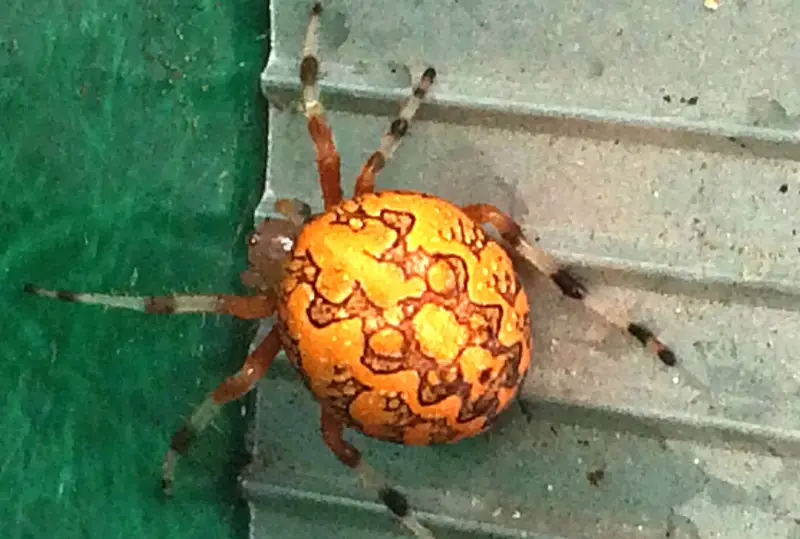
The Marbled Orbweaver (Araneus marmoreus), sometimes called the Pumpkin Spider, is a striking orb-weaving spider found in Missouri’s moist forests, especially near riverbanks and tall grasses. Females can grow up to 18 mm and feature a large, rounded abdomen with elaborate marbled patterns in orange, yellow, or white, making them one of the most colorful spiders in the region.
They construct vertical webs close to the ground in dense vegetation. Instead of sitting at the web’s center, Marbled Orbweavers hide at the end of a signal line that leads to the web. When vibrations indicate trapped prey, the spider rushes forward to subdue it. This behavior reduces their chances of being spotted by predators.
Despite their bold appearance, these spiders are timid. When disturbed, they will usually drop from the web or retreat. Bites are extremely rare and not medically significant. In Missouri, their colorful presence is a seasonal highlight of late summer and early fall woodlands.
Brilliant Jumping Spider
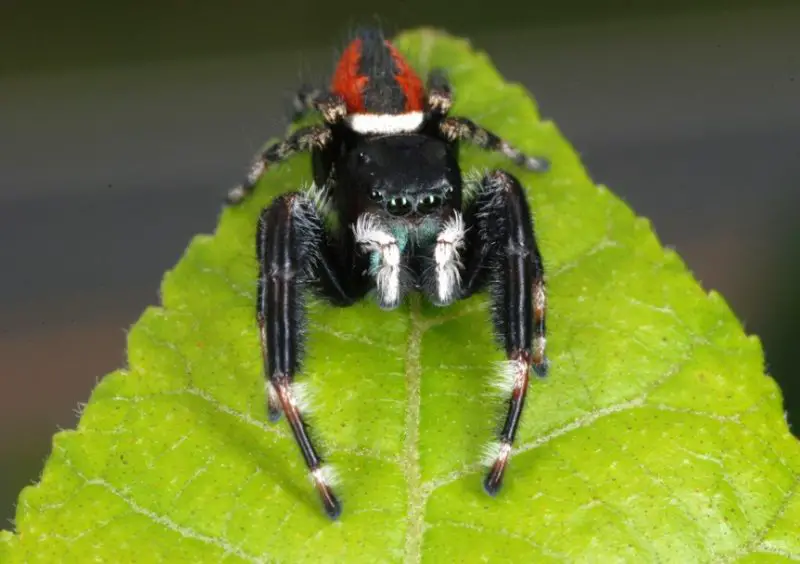
The Brilliant Jumping Spider (Phidippus clarus) is one of the most common jumping spiders throughout Missouri, with surveys suggesting it accounts for over half of the region’s salticid population. This species is small but striking, with females averaging 4 mm in width and males about 3.2 mm. Both sexes have large front eyes and iridescent green chelicerae.
These spiders are most often found on flowering plants, where they lurk head-down near the tops of stems. Relying on their acute vision and powerful legs, they wait patiently for prey to approach before launching a rapid ambush. Unlike web-building species, they actively stalk and pounce on crawling insects and other spiders.
Brilliant Jumping Spiders are not dangerous to humans and are often described as inquisitive due to their habit of watching motion with their forward-facing eyes. In Missouri gardens and meadows, they serve as agile, beneficial predators that help maintain ecological balance.
Triangulate Combfoot
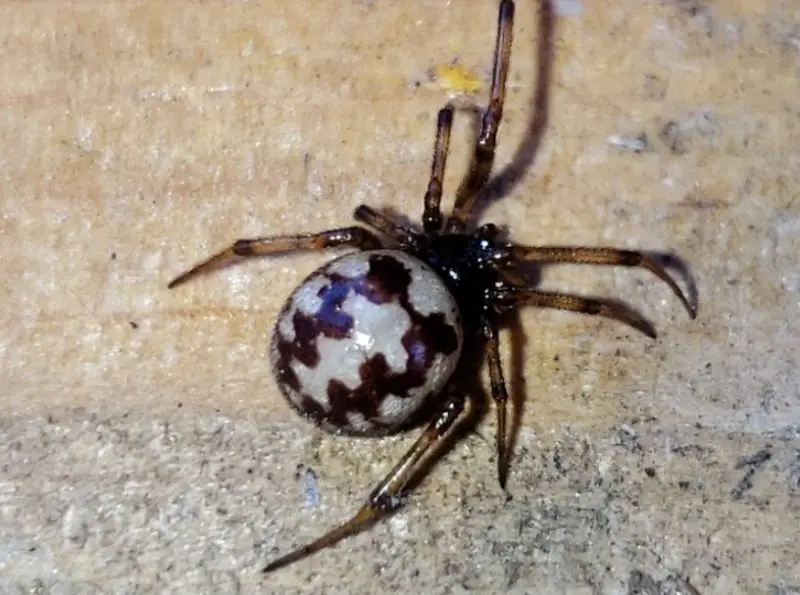
The Triangulate Combfoot (Steatoda triangulosa), also called the Triangulate Cobweb Spider, is a common indoor species across Missouri. Females grow to about 6 mm in length and are recognized by their pale tan bodies marked with brown triangle-like patterns on the abdomen. They are closely related to widow spiders but are not dangerous.
These spiders are known for their strong and sticky webs, often constructed in quiet, undisturbed corners of homes, basements, or crawl spaces. Although their vision is poor, they rely on vibrations to detect trapped prey such as ants, ticks, and even other spiders—including potentially harmful ones like the brown recluse.
Despite their intimidating relatives, Triangulate Combfoot spiders are harmless and beneficial. Their role in reducing household pests makes them valuable residents in Missouri homes. They typically avoid human contact and are more likely to retreat than bite when disturbed.
Striped Lynx Spider
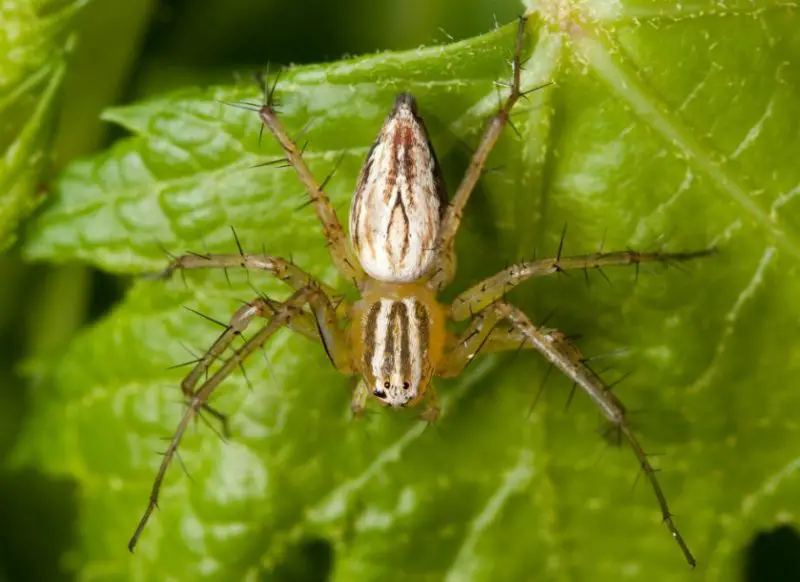
The Striped Lynx Spider (Oxyopes salticus) is a common inhabitant of Missouri’s grassy fields, row crops, and other areas rich with leafy vegetation and weeds. Females typically measure between 5 and 6 millimeters, while males are slightly smaller, ranging from 4 to 5 millimeters. Their slender bodies are adorned with distinctive striping, which camouflages them effectively within the foliage, allowing them to stalk prey unnoticed.
Unlike many spiders that rely on webs, the Striped Lynx is an active hunter that operates primarily during daylight hours. It prowls on the ground and among low plants, using its agility and sharp eyesight to pursue a variety of small insects. This spider’s preference for open, sunny habitats with ample ground cover means it plays an important role in controlling pest populations in Missouri’s agricultural and natural environments.
Although the Striped Lynx Spider can bite if provoked, its venom is not considered dangerous to humans. A bite might cause slight swelling or mild irritation that usually subsides within a few days. Generally shy and wary, these spiders avoid human contact and contribute quietly to the ecological balance wherever they are found.
Northern Black Widow
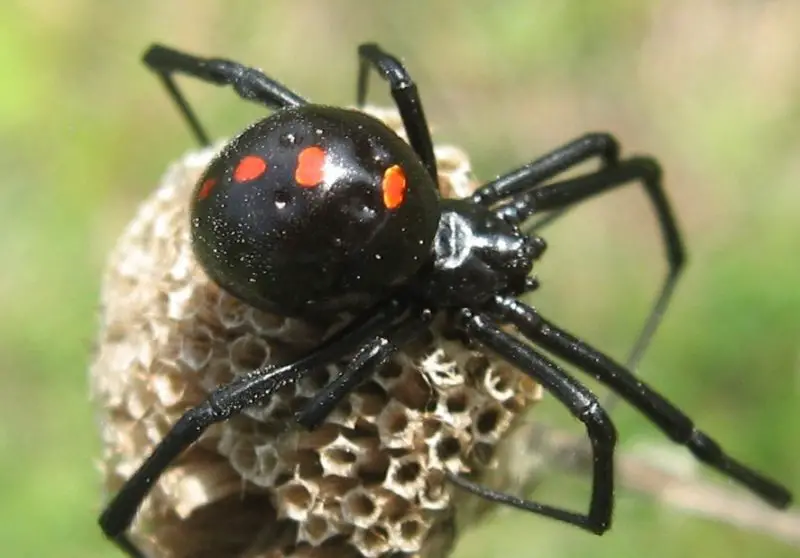
The Northern Black Widow (Latrodectus variolus) is a venomous species found throughout Missouri’s more secluded and undisturbed habitats. It favors wooded areas, often taking refuge in tree stumps, under logs, or within crevices in stone walls. Adult females are relatively large, measuring between 9 and 11 millimeters, while males are smaller and less often encountered due to their more reclusive nature.
This spider is well known for its irregular, three-dimensional web, which is constructed from extremely strong and sticky silk. These webs tend to be hidden in dark corners or sheltered spaces where the female waits patiently for prey. While the Northern Black Widow’s venom is potent and can cause significant discomfort, fatalities are exceedingly rare, with less than one death per hundred bites.
People in Missouri should exercise caution around these spiders, especially when working outdoors or cleaning areas where black widows may reside. However, the species is not aggressive and will bite only when disturbed or threatened. Their presence is part of the natural ecosystem, controlling insect populations effectively.
White-jawed Jumping Spider
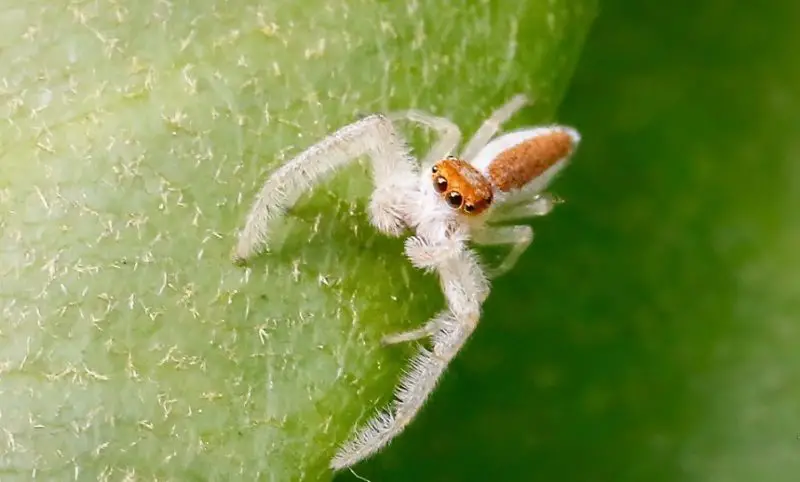
The White-jawed Jumping Spider (Hentzia mitrata), sometimes called the Crowned Hentzian Jumping Spider, is a visually striking species found within Missouri’s forest canopies. Unlike most jumping spiders which are often brown or black, this species shows a unique coppery coloration that stands out in the dappled light of tree tops.
Because of their preference for the canopy, White-jawed Jumping Spiders are difficult to observe. They do not build webs to catch prey but rather use their excellent vision and agility to hunt at night. Their silk is reserved for other purposes, such as molting and egg-laying, highlighting their active, independent lifestyle in Missouri’s woodlands.
This species is rarely encountered by people due to its arboreal habits and nocturnal activity. White-jawed Jumping Spiders are harmless to humans and contribute to the diversity and health of Missouri’s forest ecosystems by controlling insect populations.
Wetland Giant Wolf Spider
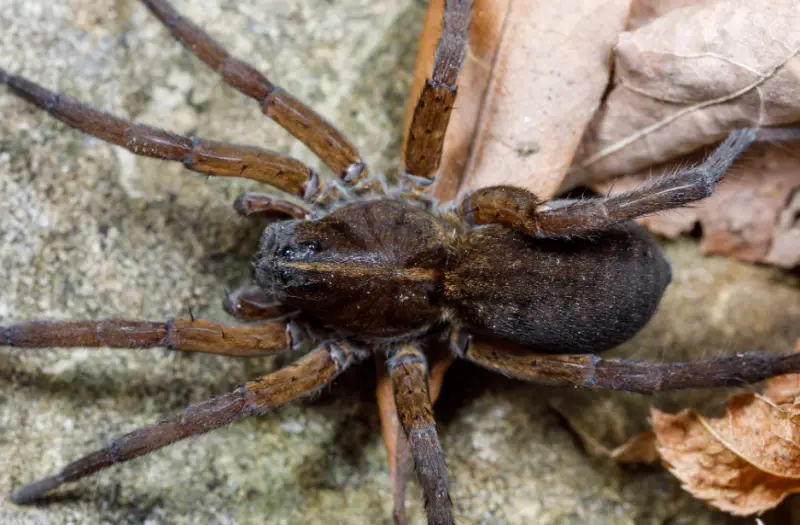
The Wetland Giant Wolf Spider (Tigrosa helluo) is one of Missouri’s smaller wolf spiders, measuring around 17 millimeters. It favors moist habitats near woods, marshes, and riverbanks, where it roams alone as a solitary hunter. Its keen eyesight and sharp senses make it a skilled nocturnal predator.
Unlike many spiders, the Wetland Giant Wolf Spider does not spin webs but relies on stealth and speed to catch prey on the ground. Its solitary nature and preference for wet environments make it a distinctive member of Missouri’s wolf spider community. It plays a vital role in controlling insect populations near aquatic habitats.
Though capable of biting if frightened, this wolf spider’s venom is not dangerous to humans. It generally avoids confrontation and is unlikely to attack unless panicked. The Wetland Giant Wolf Spider quietly maintains balance in Missouri’s wetland ecosystems.
Black-tailed Red Sheetweaver
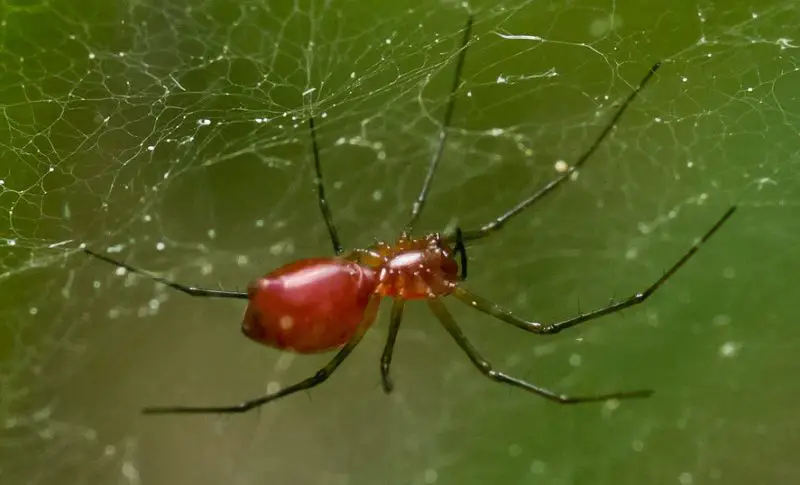
The Black-tailed Red Sheetweaver (Florinda coccinea), sometimes known as the Red Grass Spider, is a small but fascinating species found in Missouri’s grassy areas. Adult spiders grow to about 3 to 4 millimeters in length. Their webs are unique, composed of a horizontal sheet of non-sticky silk with tangled threads above that trap flying insects.
When an insect falls onto the sheet, the lurking spider quickly seizes it. Despite this clever hunting technique, the life cycle and ecology of the Black-tailed Red Sheetweaver remain largely understudied, a common situation for many members of the Linyphiidae family. These tiny spiders are part of one of the largest spider families worldwide, yet their small size often keeps them unnoticed.
In Missouri, this spider’s role in ecosystems is subtle but important, helping to control small flying insects. It is harmless to humans and goes about its business quietly among the grasses, contributing to the rich biodiversity of the region.
White-banded Crab Spider
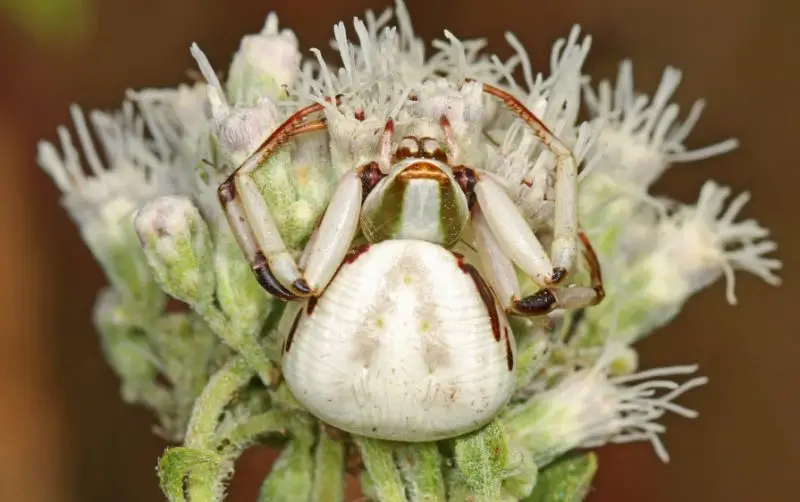
The White-banded Crab Spider (Misumenoides formosipes) is a distinctive species frequently spotted throughout Missouri’s meadows and gardens. Females range from 5 to 11 millimeters in length and are easily identified by the striking white stripe crossing their eyes. Males are smaller, generally measuring around 2.5 to 3.2 millimeters. This spider is a master of camouflage and deception.
Rather than spinning webs to catch prey, the White-banded Crab Spider relies on ambush tactics. It perches on flowers, patiently waiting to seize visiting pollinators like bees and butterflies with its powerful front legs. One remarkable trait is the female’s ability to change color between white and yellow to better blend with the flower she occupies. This slow transformation, taking several days, enhances her ability to remain unseen by both prey and predators.
Although this species possesses venom to subdue insects, it poses little threat to humans. Bites are rare and typically occur only if the spider is accidentally crushed. The White-banded Crab Spider plays a beneficial role in Missouri’s ecosystems by controlling pollinator populations and adding to the biodiversity of local flower communities.
Arrow-shaped Orbweaver
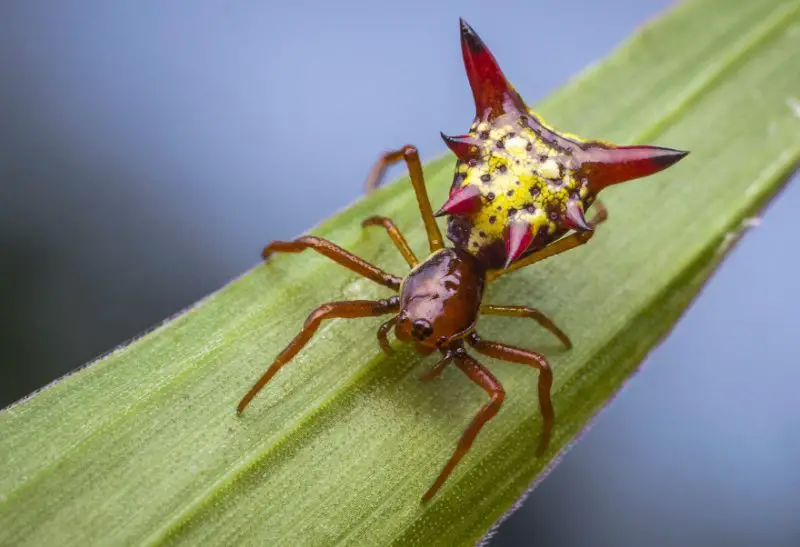
The Arrow-shaped Orbweaver (Micrathena sagittata) is a visually striking spider found in Missouri’s wooded areas and gardens, often admired for its unique appearance. Females measure between 8 and 9 millimeters, sporting a large, bright yellow abdomen adorned with two prominent red and black spines. Males are smaller and less frequently seen, making the female’s distinctive shape a familiar sight in late summer and fall.
This orbweaver constructs intricate webs about 1.5 to 2 meters above the ground, cleverly designed to trap flying insects. These webs can often be spotted in Missouri’s gardens, forests, and parks, where the spider patiently waits for prey to become ensnared. The Arrow-shaped Orbweaver’s hunting success helps keep insect populations in check, supporting the balance of local ecosystems.
Despite its somewhat intimidating appearance, the Arrow-shaped Orbweaver is harmless to humans. Bites are extremely rare and tend to cause only mild irritation similar to a mosquito bite. This spider is more likely to retreat than to bite, making it a peaceful presence in Missouri’s natural environments.
Banded Garden Spider
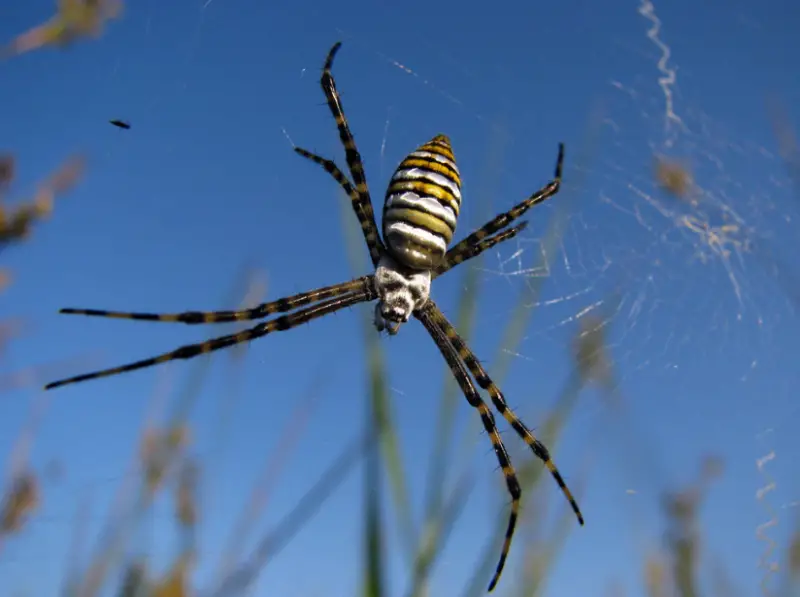
The Banded Garden Spider (Argiope trifasciata), also known as the Banded Orb-weaving Spider, is a common species across Missouri’s gardens, fields, and open spaces. Female spiders can grow up to 14.5 millimeters long, while males are notably smaller and often go unnoticed due to their diminutive size. Their striking banded pattern makes them easy to identify.
This spider is a skilled daytime hunter, spinning large and complex orb webs that can span up to two meters wide. These webs are typically built between tall grasses or shrubs, where flying insects like wasps, flies, and beetles frequently get trapped. Once captured, prey are quickly immobilized with silk and injected with venom that subdues them effectively.
Although the Banded Garden Spider looks dramatic and formidable, it is not dangerous to humans. Bites are rare and cause minimal discomfort, usually no more than mild irritation. These spiders provide a valuable service by controlling insect populations, and they are a familiar and welcome sight in many Missouri gardens.
Long-bodied Cellar Spider
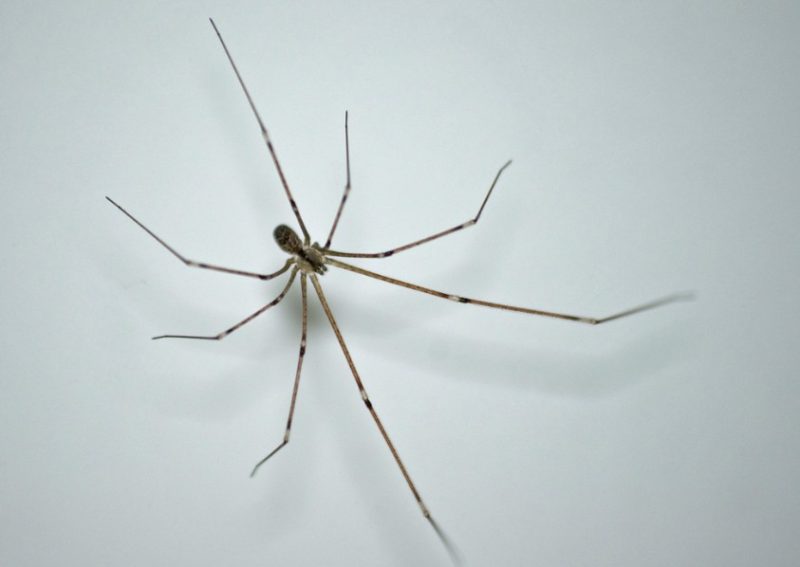
The Long-bodied Cellar Spider (Pholcus phalangioides), often called Daddy Long-legs or Skull Spider, is a common invasive species found in Missouri homes, especially in cellars, garages, and on ceilings. Females measure about 8 millimeters in body length, with males being slightly smaller. Their exceptionally long legs, which can be five to six times the length of their bodies, give them a distinctive, delicate appearance.
This spider moves with a characteristic floppy gait that makes it easy to recognize. Despite its fragile look, the Long-bodied Cellar Spider builds tangled webs in dark, undisturbed corners where it preys on smaller spiders and insects. Unfortunately, it is considered a threat to native Missouri spider species due to its invasive nature, competing for resources and territory.
Though often startling to people, Long-bodied Cellar Spiders do not bite humans. Their presence indoors helps control other pests, but their rapid spread has raised ecological concerns. They tend to avoid human interaction and are harmless guests in Missouri households.
Six-spotted Fishing Spider
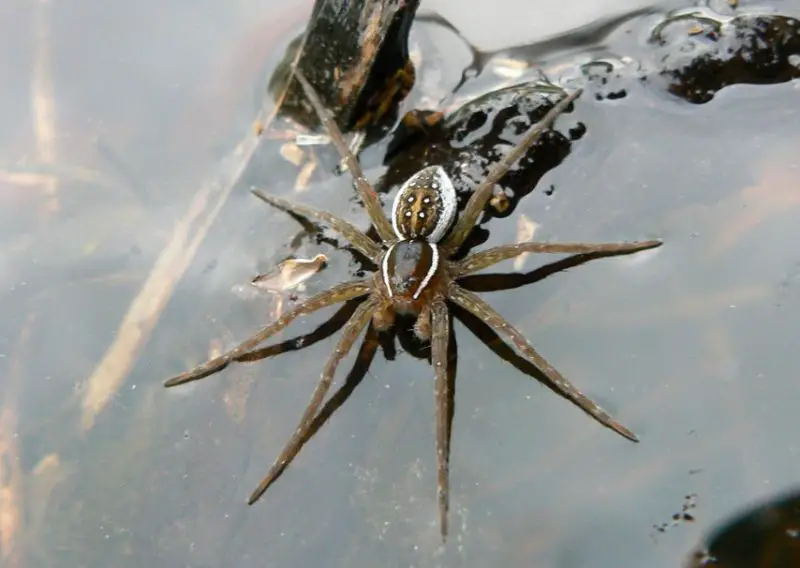
The Six-spotted Fishing Spider (Dolomedes triton), also known as the Dock Spider, is one of Missouri’s impressive semi-aquatic spiders. Females can stretch their legs up to 60 millimeters, while their bodies measure between 15 and 20 millimeters; males are smaller, around 9 to 13 millimeters. These spiders are usually found near ponds, wetlands, lakeshores, and slow-moving streams.
This spider is an expert hunter that spends much of its time waiting patiently near water for prey. It can capture insects, frogs, tadpoles, and even small fish up to five times its size—a rare behavior for spiders. Using venom to immobilize prey, it is a formidable predator in Missouri’s wetland ecosystems.
Six-spotted Fishing Spiders typically avoid human contact, often retreating quickly by running or skating across water surfaces. Their bites are harmless to humans, causing no serious effects. These spiders play an important role in balancing aquatic and semi-aquatic food webs in Missouri.


